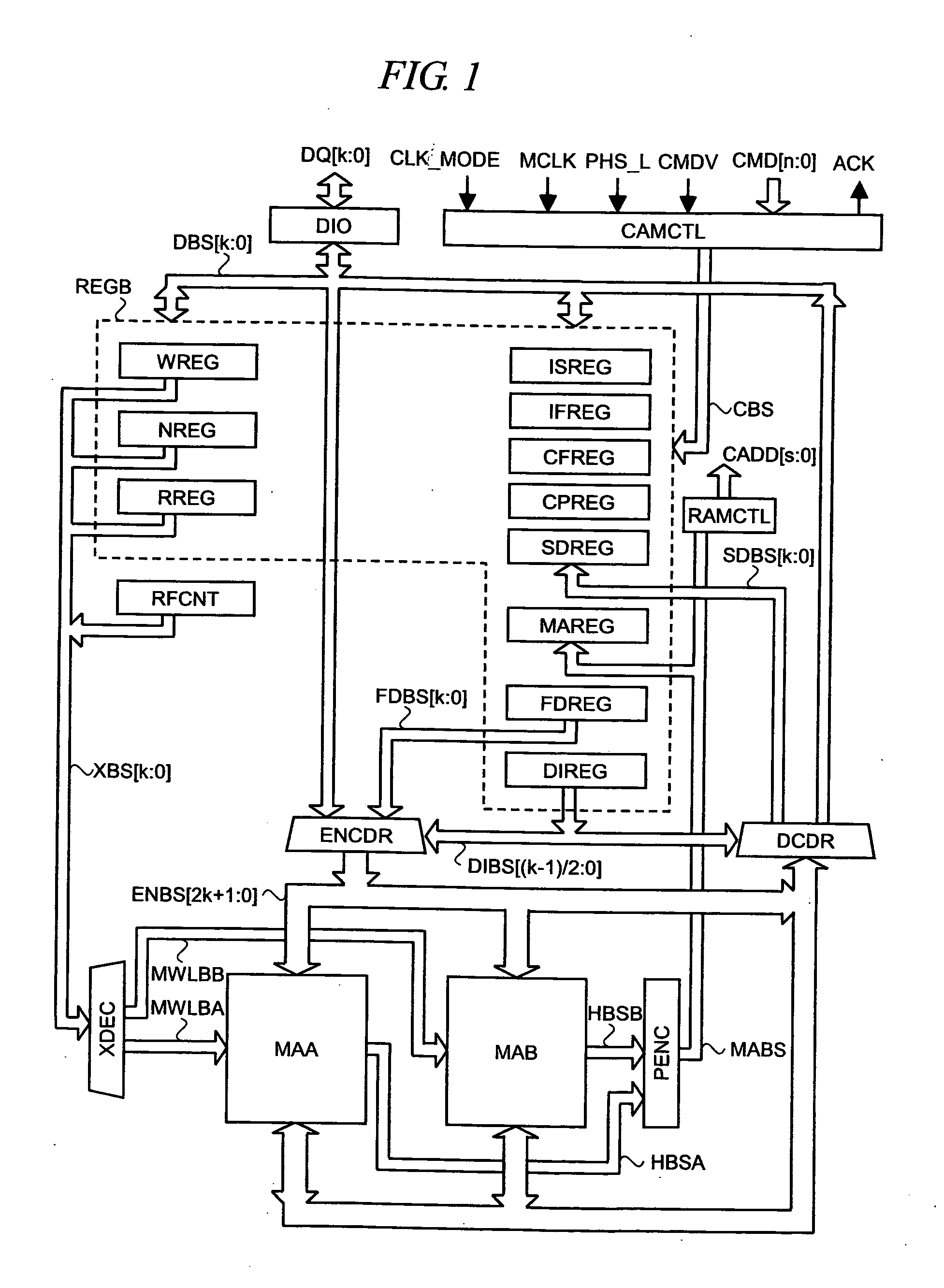Semiconductor device
a technology of semiconductors and devices, applied in the field of semiconductor devices, to achieve the effect of improving the availability of cams
- Summary
- Abstract
- Description
- Claims
- Application Information
AI Technical Summary
Benefits of technology
Problems solved by technology
Method used
Image
Examples
first embodiment
(I / O Signal Mapping)
[0049]FIG. 2 shows an example of mapping of CAM I / O signal and One-hot-block code for the entry in the present invention with respect to the IP address region and the flag region, respectively. Although the detail will be described later, the I / O signals of this embodiment have the two features. The first feature is to use the binary information concerning the minimum value of each entry and the difference as the I / O signal in such an IP address region that a plurality of information is collectively stored. The second feature is that the data and the binary information concerning the mask are used as I / O signals similar to the conventional TCAM in the region as represented by the flag region whose range is never specified like the IP address.
[0050] First of all, I / O signals of the IP address region will be described. In FIG. 2, for the simplification, mapping of 2-bit I / O signals is shown for the case of 0-3 (decimal system) combinations. More concretely, the ...
second embodiment
[0146] Next, another example of the CAM operation using the One-hot-spot block code described in first embodiment will be described. The feature of this operation lies in the point that the operation time is shortened by making use of the wide bus width of the CAM data bus DQ and applying the address signal non-multiplexing system in which the low address X-ADD and the register address REG-ADD are simultaneously inputted. The write operation and the read operation thereof will be described as follows, respectively.
(Write Operation)
[0147]FIG. 15 shows the timing chart of write operation of CAM in this embodiment. FIG. 15 is based on the assumption similar to FIG. 6 and waveforms using the same symbols are shown.
[0148] First half of the first cycle (1A cycle): The command valid signal CMDV which is brought to the low level is driven to the high level and at the same time, the write command is inputted by using the command signal group CMD[1:0]. In addition, by setting the command ...
third embodiment
[0166] Next, another example of the floor plan of the CAM applying the One-hot-spot block code described in the first embodiment will be described with reference to FIG. 17. The feature of this configuration lies in the point that the interface circuit blocks IFB0 to IFB3 are arranged for each of the memory array blocks ARY0 to ARY3, and the entry and the search key are transmitted and received between the memory array blocks ARY0 to ARY3 via the corresponding encoding data buses ENBS0 to ENBS3. Here, similar to the interface circuit block IFB shown in FIG. 5, the interface circuit blocks IFB0 to IFB3 comprise the encoding circuit ENCDR, the decoding circuit DCDR, and the various register block REGB, respectively. Therefore, in the floor plan shown in FIG. 5, the interface circuit block IFB is arranged at the intersection regions of the cruciform regions. In the present embodiment, however, the interface circuit block IFB is arranged in the region in the transverse direction where t...
PUM
 Login to View More
Login to View More Abstract
Description
Claims
Application Information
 Login to View More
Login to View More - R&D
- Intellectual Property
- Life Sciences
- Materials
- Tech Scout
- Unparalleled Data Quality
- Higher Quality Content
- 60% Fewer Hallucinations
Browse by: Latest US Patents, China's latest patents, Technical Efficacy Thesaurus, Application Domain, Technology Topic, Popular Technical Reports.
© 2025 PatSnap. All rights reserved.Legal|Privacy policy|Modern Slavery Act Transparency Statement|Sitemap|About US| Contact US: help@patsnap.com



